Hawaii’s tourism numbers are up, but is the recovery as strong as it seems? If you’ve followed the official updates, you might think the islands are on a solid path back to normalcy. The state’s Tourism Department announced that November 2024 marked the fourth consecutive month of year-over-year growth, with total visitor arrivals at 770,940—95.3 percent of pre-pandemic levels. Sounds great, right? But the devil is in the details.
A growing dependence on U.S. visitors.
Here’s what the state isn’t shouting from the rooftops: 77 percent of visitors in 2024 came from the U.S. mainland, a full 10 percentage points higher than pre-pandemic. That’s quite a massive shift, and while mainland demand has been strong, this heavy reliance comes with risks. What happens if domestic travel softens due to economic downturns or shifts in consumer preferences? We’ve already seen that with Europe’s resiliency and some visitors even choosing other island destinations like Tahiti instead of Hawaii.
The truth is that Hawaii’s tourism industry has leaned into this imbalance out of sheer necessity. With Canada and Japan, historically top international markets, still far below pre-pandemic numbers, the state has no choice but to put all its chips on U.S. visitors. But how sustainable is this strategy?
Japan and Canada: Recovery or retreat?
Speaking about those lagging international markets. Japan, once a powerhouse for Hawaii tourism, is down 55 percent compared to 2019. That despite some increased airlift for summer 2025. The exchange rate, sluggish economic growth, and reduced air capacity are just part of the story. Has Hawaii lost some of its allure for Japanese travelers? The numbers suggest it might be a long road back—if it happens at all.
Canada, on the other hand, is often painted as a smaller piece of the puzzle. But Canadian visitors are still down 20 percent year-to-date compared to 2019. And while November 2024 showed a slight improvement, the long-term gap is still striking. With fewer visitors and reduced spending, the economic impact on Hawaii’s high-spending hotels, vacation rentals and timeshare sectors is undeniable. We especially here that at this time of year, historically very strong with Canadian snow birds.
Financial implications of an unbalanced recovery.
Domestic visitors are spending more than ever. U.S. West spending is up 32.8 percent since 2019, and U.S. East is up 33.7 percent. But those gains don’t necessarily make up for the billions Hawaii used to rake in from high-spending international markets. Japanese visitors, for example, have historically spent significantly more per day than their U.S. counterparts. The drop in Japanese spending, down 53.1 percent since 2019, leaves a gaping hole in Hawaii’s economy that even the most enthusiastic mainland travelers can’t fill.
This shift also raises questions about the long-term impacts on the local tourism ecosystem. Will Hawaii accommodations face sustained pressure? And what happens to the airlines that once thrived on Hawaii’s international routes?
The state’s party line vs. reality.
The state’s upbeat narrative doesn’t tell the whole story. Celebrating growth without acknowledging the lopsided recovery glosses over the deeper issues at play here. Yes, it’s great that U.S. visitors are stepping up, but the lack of diversification in Hawaii’s tourism base is a marked vulnerability, not a strength.
The real question is whether the state and the industry are doing enough to rebuild these lost connections. Or is Hawaii’s tourism future destined to rely on a single market, hoping that too doesn’t falter?
Conclusion: A future built on fragile ground?
Hawaii’s tourism recovery is a mixed bag. While the numbers show some encouraging progress, they also reveal an unbalanced foundation being propped up by U.S. mainland travelers. That might work for now, but Hawaii’s economy remains precariously more dependent than ever on domestic demand. And as we all know, even the strongest foundation can start to crumble as island trade winds shift.
We welcome your input!
Get Breaking Hawaii Travel News
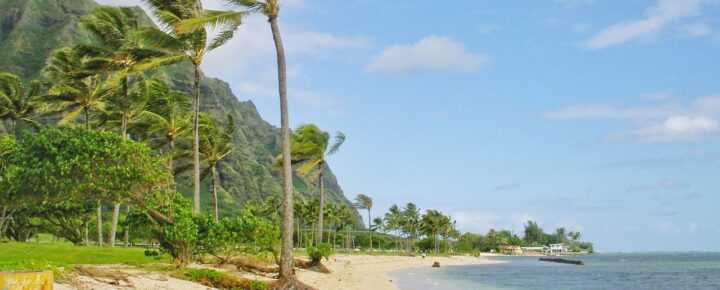
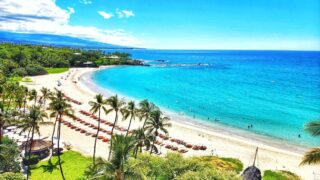
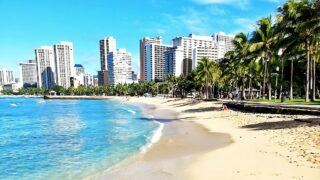
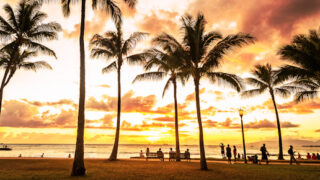
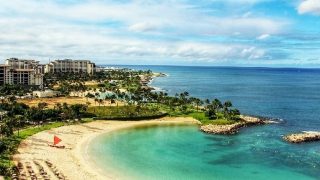
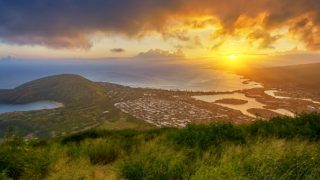

Why should I go to Hawaii any more when the dollar goes much further in Europe, the Caribbean, or Asia? Most of those places are also cleaner with less homeless and drug addicts running around their tourist centers and a lot more aloha. We lived on the islands about a decade ago and every time we come back it’s so much worse than we remembered.
Hawaii is turning into another Puerto Rico…a very beautiful place with a corrupt failed state mentality.
My name is Bob. I live in Canada. We have visited Hawaii 7 times. I have recommended Hawaii to umpteen friends and family members.
Our daughter visited recently and came home a week early as her and her husband had bad experiences. They found locals rude, mean and resentful. Our daughter had visited on 4 prior occasions and never experienced treatment like this. On more than one occasion, they were harassed. Locals have unpleasant nicknames for tourists who have invaded the island.
Not sure how to suggest fixing this problem. When I was there last year, on Saturday evenings being downtown was frightening during the so called parades of angry people.
This treatment will destroy visitors which may be the goal
I live in the continental US. I am seeing an uptick in increasingly hostile, negative comments on social media by residents of Hawaii who hate tourists. Most seem to live on Maui. It’s not a surprise to me that tourism from the US is down. Time to go back to sugar cane?
The state government made their choice. By continuing to increase accommodation and other taxes they have essentially priced everyone out, except for the elite.
Better get the costs down. There are other options you know. And coupled with the dwindling Aloha It’s only pushing people to other more friendly options. It starts with how Hawaiians vote.
There’s a simple explanation for the lack of Canadian visitors and that is the horrible exchange rate. When $300 US becomes $432 CAD, we look elsewhere to spend our vacation dollars.
A basic reason for the decline in international travelers that the state never acknowledges (because they would also have to admit that they’re ultimately responsible for it) is the fact that Hawaii’s homelessness problem has been allowed to expand and fester for so long that the islands are no longer considered safe. There are just too many cheaper and safer alternatives to go to, especially after seeing the Hawaii state government is doing nothing to mitigate this problem. I live in Japan and hear this all the time. The Japanese will not return in great numbers until Hawaii cleans itself up and starts getting control of its rapidly deteriorating reputation for crime.
So suddenly after several failed attempts to get people other than US Mainland visitors to come to Hawaii, the unwashed mainland traveler may now, once again, become the salvation for Hawaii!? Hawaii leaders cannot get out of their own ways in dealing with the issues that are actually affecting the Islands but if there is no personal return for them they will not deal with the real issues. Elections Still have consequences and being in denial about it and continuing to vote the exact same way each and every time will change Nothing in Hawaii!
The Canadian dollar and Japanese Yen are both down big time against the USD and as the article suggests, there’s plenty of competition for those tourists who are tired of over paying for their “Hawaiian Experience”! Can the US market fill the void…..extremely bad idea to put all of your eggs in one basket!
Stop ripping tourists off, double charging them for services and expecting them to pay taxes that keep rising without justification and as Steve McGarret used to say, “Maybe, just maybe Donno”, the tourists will come back!
I live on Kauai and I take my vacations to places where my money goes the furthest, Asia, plus living in Hawaii I’m half way there. I went to Japan, spent 10 days, and stayed in nice hotels( nothing special but clean and safe) for less than a $100 a night. If I went to the big island and stayed 5 days the cost difference is almost the same and less vk time. Money goes further in Asia. High accommodation prices, food, dining, cost of interisland ( that should change) travel I’ll go elsewhere, sad to say. These hotels should worry more about lowering prices than paying dividends but what am I saying, this is America.
Another issue that Hawaii may come across, relying so heavily on mainland tourists, is with the chaotic nature that your new/old president likes to govern. He might not only affect middle class American citizens ability to afford to travel but if he continues with his tariff threats to Canada and other so called allies, he will reduce our ability to do so and make the foreign visitors numbers drop even further
Just had to make it somehow political now didn’t you!? Guess what, I’m part of that middle class and nothing that President Trump did in his first administration affected me one bit as far as my ability to travel anywhere. Maybe focus on what you have going on up in Canadia first!
Hey Don,
My intention was not to start a whole political conversation regarding the pros and cons of Donald Trump and I refuse to go down that road. The people have spoken and it’s going to be what it’s going to be. Most of the world and both of our economies were in a great place pre-covid. However, if he does put these ridiculous 25% tariffs on all Canadian goods it will weaken our dollar further thus making it even less affordable than it already is…and should drive inflation higher. There’s nothing but Aloha here and I hope to be able to return one day.
We were surprised at food prices on Kauai in December. We have traveled to Tahiti and food there was less unless you stayed on Motu Resorts. Hotel rates were higher too this trip to Kauai.
Unfortunately the cost of a Hawaiian vacation has become too expensive. Especially on Maui the hotel prices are unsustainable. Eating out has doubled since the pandemic. And the negativity from a small vocal minority against tourists has not helped.. these people are all over social media spreading misinformation.
As a Canadian who loves Hawaii, its people and its culture, it has sadly become a destination for only the wealthy. My family has been fortunate enough to visit Hawaii on 6 occasions. The first 3 times as a couple, venturing to the 4 main islands and the last 3 visits have been with our children in ‘17, ‘18 & ’22 to our favourite, Kauai. We stayed at the same complex in Princeville and paid $115/night in 2017, $160/night in 2018 and $180/night in 2022. Now I can’t find anything under $450-500/night. That far out paces the rise in inflation. Rental car prices have also far exceeded inflation. On top of the already extremely high taxes the Hawaiian government wants to add another fee to visitors. There’s no room now for the hardworking middle class who love and respect Hawaii and who want to be good stewards of the islands. Catering only to the wealthy is very shortsighted and it will come back to haunt.
I keep hearing that the US folks have saturated their credit limits and that defaults are on the rise. I have a lot of pessimism about the short economic outlook of the US. If folks in the US actually have to control their spending then the Hawaii travel market could get hit hard.
With the Euro rapidly sinking against the dollar, we are probably gonna see more mainlanders going to EU, especially in the summer months. It’s nice to see some pickup in aggregate stats, though one month does not make a trend. People over here in California still ask me why Hawaii doesn’t want tourists right now. I’m not sure why that message has been so sticky, but it is. I see little advertising here in California promoting Hawaii. I think we have to work harder and smarter if we want more tourists.